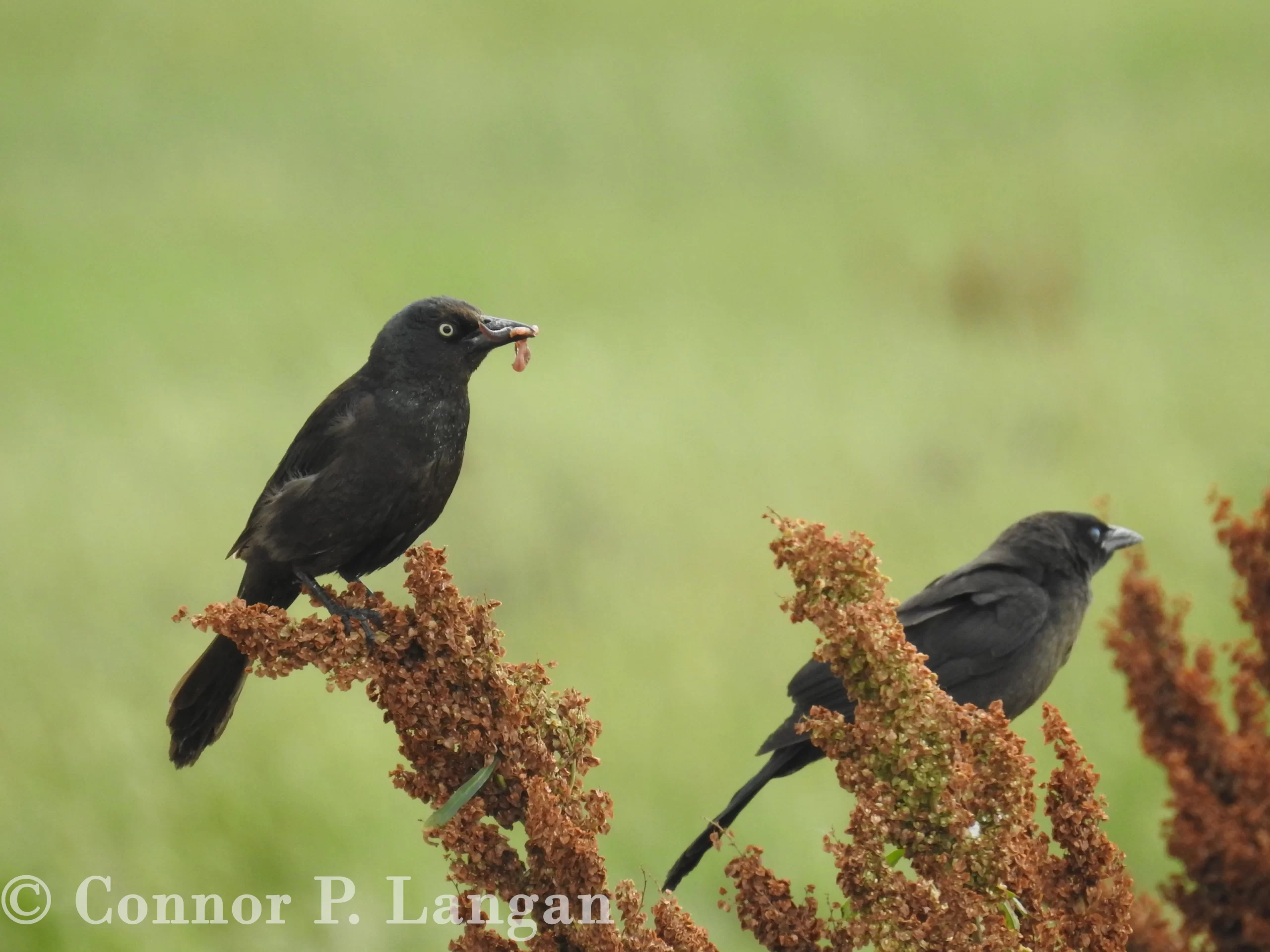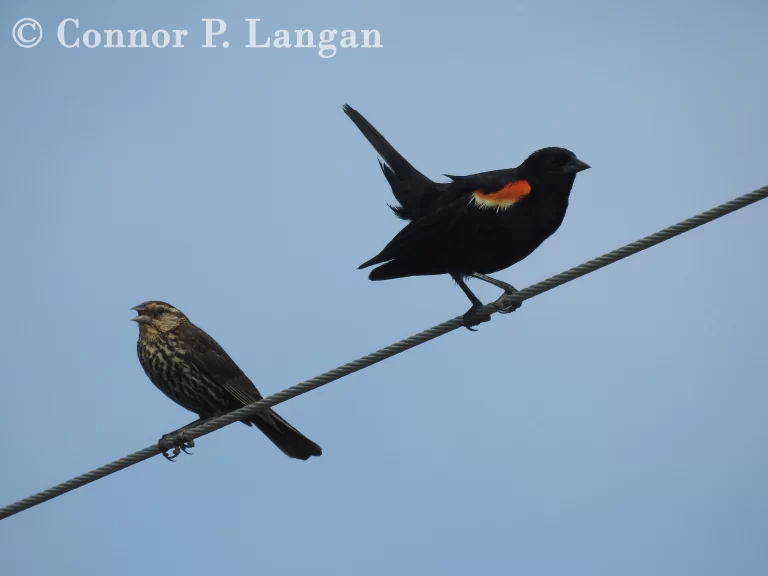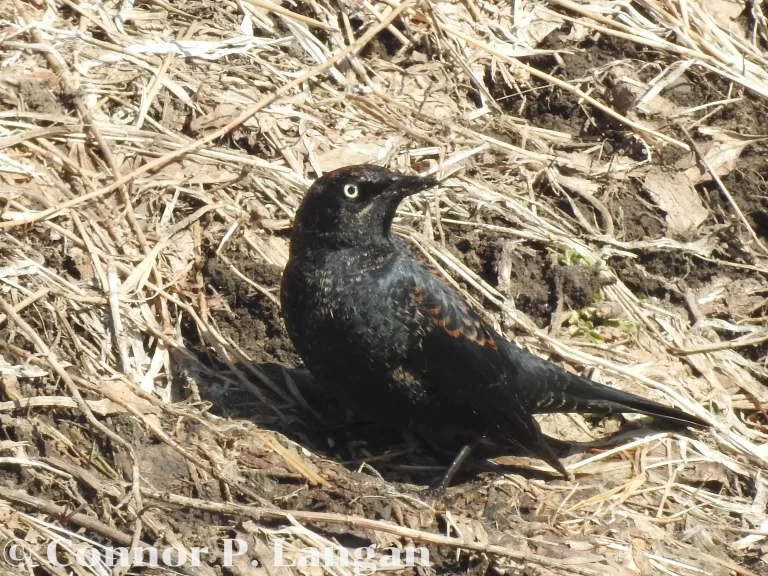Description
Common Grackles are sizable blackbirds with long legs and tails and large, thick beaks. Their heads appear fairly flat rather than rounded. Adult Common Grackles have pale yellow eyes.
This species can grow to be anywhere from 11 to over 13 inches in length, while Common Grackles tend to weigh 2.6 to 5 ounces.
Males and females have an iridescent appearance to their plumage, with males looking a bit bolder and shinier than females. Male Common Grackles are usually larger than females, with iridescent blue heads, throats, wings, and tails and dark green bodies.
Female Common Grackles often have iridescent blue wings and chocolate-brown bodies.
Immature Common Grackles have dark eyes rather than pale gold eyes, but they otherwise look much like adult females.
Several subspecies of Common Grackles exist, with some subspecies having bodies that are largely purple or bronze.
Behavior
Common Grackles are bold, raucous species of birds whose dominant personalities make them disliked by many backyard birders.
These birds form massive flocks with other blackbird species during the nonbreeding season. Common Grackles are highly social birds, as they often nest near other grackles during the breeding season.
Diet
Common Grackles consume a huge variety of different food items. Though they are primarily granivorous birds that consume seeds and grains, Common Grackles also eat fruit, insects, fish, amphibians, small mammals, other birds, and scraps of human food.
Habitat
Common Grackles can survive in almost any habitat imaginable. They have adapted well to landscapes dominated by human development, being found in cities, suburbs, and other urban areas.
Look for Common Grackles in parks, marshes, agricultural fields, and other open areas. Some of the only places where Common Grackles will not be found include deserts and mature forests.
Range
The range of this species is restricted to the United States and Canada. Common Grackles are migratory in the northern parts of their range, but they are year-round residents throughout the southern extent of their range.
Common Grackles are found east and west of the Great Plains, but they do not inhabit the west coast of the United States, as the expansion of this species was likely halted by the extensive sagebrush habitat of the American West.
Breeding
Though many other blackbird species are polygamous, Common Grackles seem to be monogamous by nature. Males and females pair up for the breeding season, with females making the final selection of the nest location.
Female Common Grackles bear the responsibility of constructing their nest. For some reason, females frequently abandon the construction of their initial nest and begin a different nest in a new location after doing so.
Common Grackles have been known to nest in some unusual places, but a typical Common Grackle nest is placed at a high elevation in dense vegetation such as a coniferous tree. Common Grackles like to nest by a water source.
Female Common Grackles go to great lengths to construct their nests, as they invest up to 6 weeks into building the perfect nest. Nests are a remarkable collection of grasses, branches, plant fibers, and human garbage that are solidified with mud and lined with soft materials like hairs or feathers. The result is a cup-shaped nest.
This species has 1 to 2 broods of eggs each year, with females laying 1 to 7 eggs per clutch. It takes around 2 weeks for eggs to hatch, while nestlings fledge 10 to 17 days later.
Backyard Birding
Common Grackles may be regular visitors to a backyard bird feeding station, where they often harass and intimidate other birds so they can have first pick at the food. Look for these large blackbirds to be foraging on the ground under bird feeders.
These blackbirds will nest in birdhouses on rare occasions, but if you hope to host breeding Common Grackles, plant conifers in your yard in which they can nest.
Population Status
Though many believe that Common Grackles are extremely numerous and a nuisance, their population has experienced severe declines in the past half-century, with over 50% of their population being reduced. Around 67 million Common Grackles exist today.




